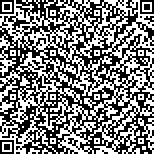本文已被:浏览 1362次 下载 3707次
投稿时间:2013-01-15 修订日期:2013-01-31
投稿时间:2013-01-15 修订日期:2013-01-31
中文摘要: 2012年秋季我国气候异常特征总体表现为:气温偏低,降水明显偏多,其中东北、华北以及江南地区降水异常偏多。分析我国气候异常成因表明,我国东北、华北降水偏多主要与西北太平洋中高纬度地区异常的东南风水汽输送有关;而我国江南及华南地区的降水偏多则主要与西太平洋副热带高压西侧的西南暖湿水汽输送密切相关。进一步研究表明,海温异常是影响2012年秋季我国气候异常的最主要的外强迫因子,其中西北太平洋中高纬度地区海温异常偏暖主要影响东北和华北地区的降水,而热带印度洋海温偶极子的正位相分布及赤道中东太平洋地区较弱的暖海温异常分布则主要影响江南及华南地区的降水。
中文关键词: 气候异常, 低温, 降水异常, 成因分析
Abstract:During the autumn of 2012, the surface air temperatures were below normal and the precipitation was above normal in most China, especially in the Northeast, North China, Jiangnan and South China. By analyzing the causes for the climatic anormaly, it is found that more precipitation in the Northeast and North China was closely related with the anomalous southeasterly moisture transport from the western North Pacific Ocean while precipitation anomalies in Jiangnan and South China were mainly influenced by the southwesterly warm and moist water vapor along the western boundary of the western North Pacific tropical high.
Further analysis indicates that the sea surface temperature anomaly (SSTA) was the major extermal forcing factor for the climatic anomalies in the autumn of 2012. The significantly warm SSTA in the middle and high latitudes of the western North Pacific Ocean caused more precipitation in the Northeast and North China, whereas the positive tropical Indian Ocean dipole and weaker warm SSTA in the middle and eastern tropical Pacific Ocean were possibly conducive to more precipitation in Jiangnan and South China.
文章编号: 中图分类号: 文献标志码:
基金项目:国家重点基础研究发展计划(2012CB417205和2013CB430202)、国家自然科学基金重点项目(41130960)和国家科技支撑计划(2009BAC51B02)共同资助
| 作者 | 单位 |
| 柳艳菊 | 国家气候中心,北京 100081 |
| 王艳姣 | 国家气候中心,北京 100081 |
| 司东 | 国家气候中心,北京 100081 |
| 王东阡 | 国家气候中心,北京 100081 |
| 王遵娅 | 国家气候中心,北京 100081 |
引用文本:
柳艳菊,王艳姣,司东,王东阡,王遵娅,2013.2012年秋季我国气候异常及成因分析[J].气象,39(4):526-530.
LIU Yanju,WANG Yanjiao,SI Dong,WANG Dongqian,WANG Zunya,2013.Features and Possible Causes for the Climatic Anormaly in China in Autumn 2012[J].Meteor Mon,39(4):526-530.
柳艳菊,王艳姣,司东,王东阡,王遵娅,2013.2012年秋季我国气候异常及成因分析[J].气象,39(4):526-530.
LIU Yanju,WANG Yanjiao,SI Dong,WANG Dongqian,WANG Zunya,2013.Features and Possible Causes for the Climatic Anormaly in China in Autumn 2012[J].Meteor Mon,39(4):526-530.

